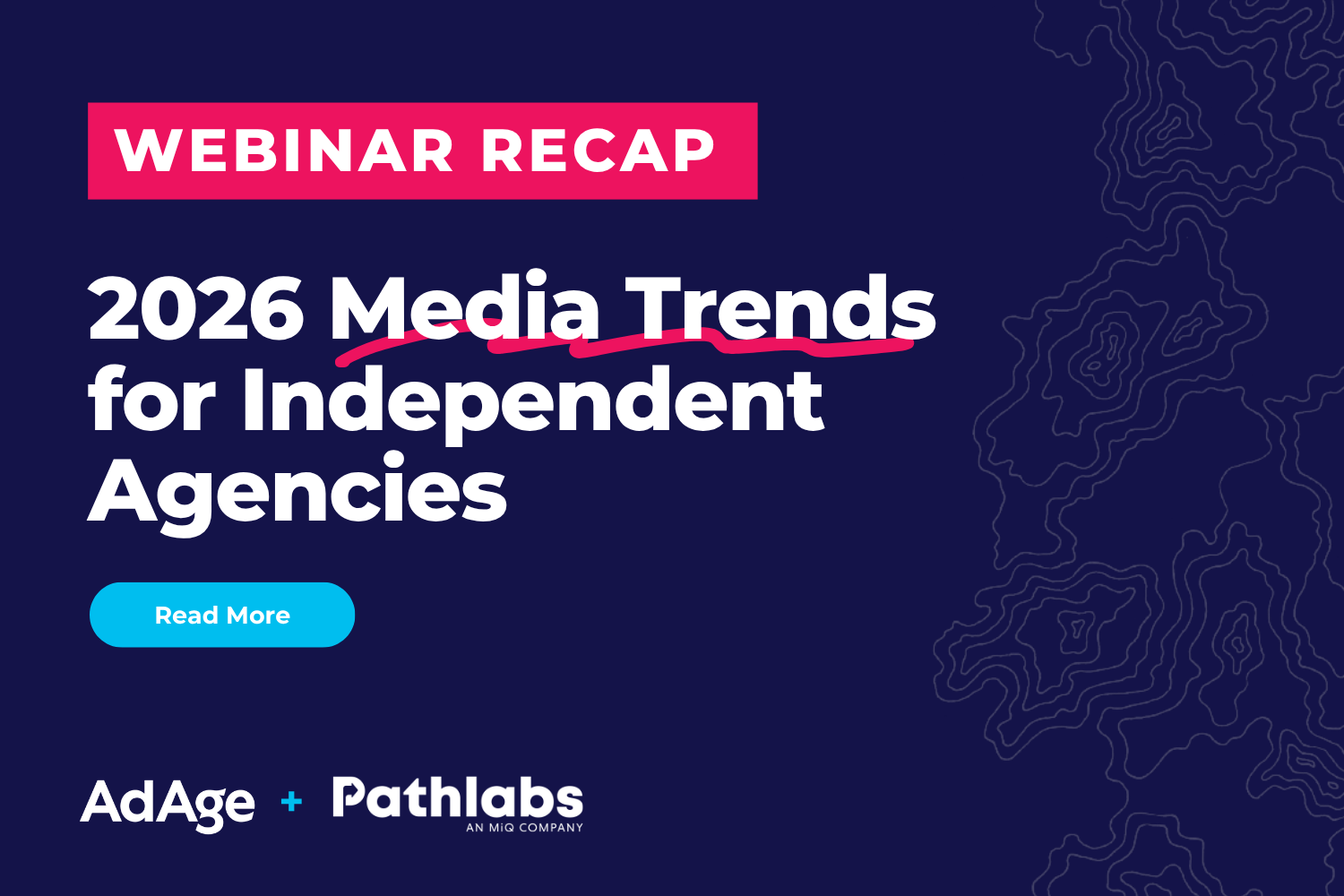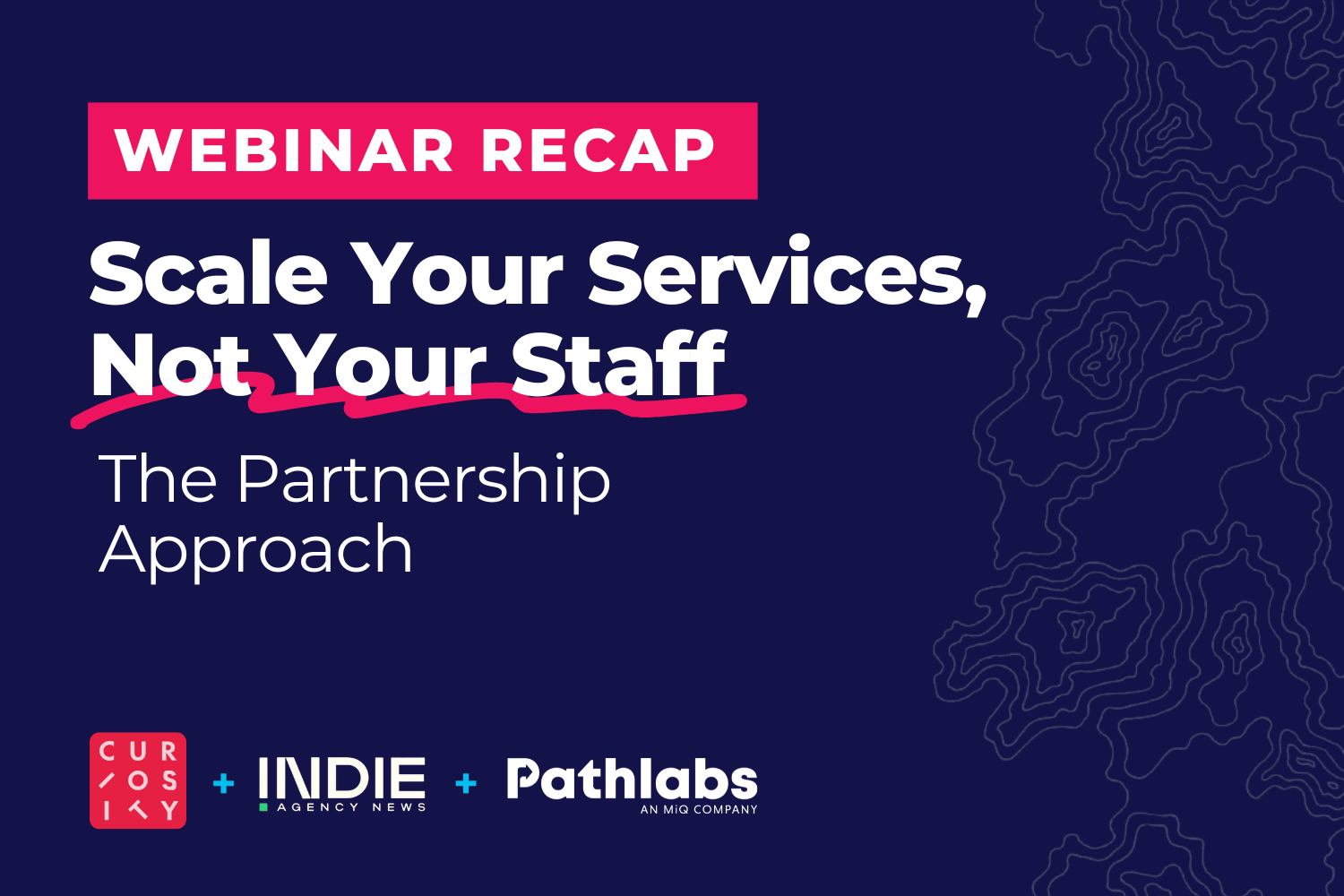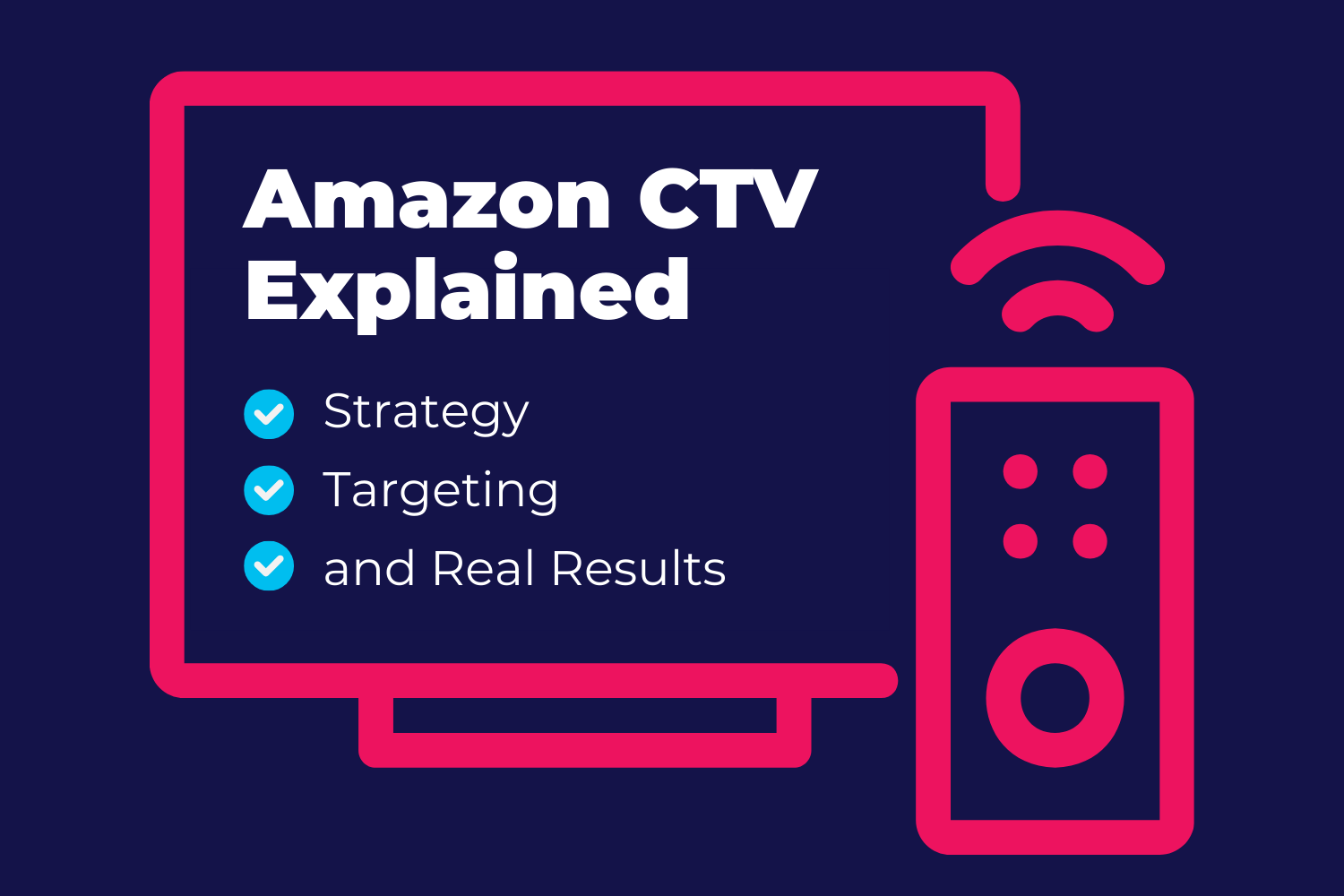Uncovering Marketing Attribution Challenges & Finding Solutions
| Pathlabs Marketing |
| September 9th, 2024 |
Digital media experts take pride in their understanding of AdTech concepts, yet attribution is one concept that remains tricky to understand and even more complex to implement.
In this piece, we’ll revisit the definition of attribution and hone in on its challenges for digital media and marketing teams. We’ll also share how to better approach attribution in your next campaign with the right mindset.
Circling Back on the Definition of Attribution
Before discussing the challenges in attribution, let’s circle back to the premise of attribution.
As marketers, we know that guiding users down the funnel toward conversion requires facilitating multiple touchpoints. These touchpoints can include paid digital media ads—such as display, CTV/OTT, paid social, paid search, DOOH, and in-app ads—to organic content like blog posts, social media posts, and email newsletters, as well as offline media placements and marketing materials.
Given the time, effort, and money spent creating these touchpoints, marketers naturally want to determine which are most effective at driving conversions.
This is where attribution comes into play. Overall, attribution encompasses the activities of assessing the conversions driven by media and marketing efforts, identifying, “attributing,” the touchpoint(s) that encouraged the conversion, and better understanding the customer path to conversion.
In the context of digital media execution, attribution primarily comes into play when measuring conversions and reporting on paid ad campaigns. Ad-buying platforms and AdTech tools, like those offered by Google, The Trade Desk, and Meta, among others, provide conversion tracking and basic attribution reporting capabilities, which offer insights into which specific touchpoints contribute to driving conversions.
Multi-touch attribution measurement tools are also available for teams executing various campaigns across channels. These tools attempt to attribute conversions to cross-channel touchpoints, offering a more holistic view of how different interactions work together to drive conversions.
Common Marketing Attribution Challenges
Challenge 1: Multiple Types of Attribution Exist
The first hurdle in marketing attribution is understanding the different types of attribution, their complexities, and limitations.
Online to Online Attribution
This type of attribution focuses on identifying and assigning credit to online touchpoints that lead to online conversions.
For instance, a user might engage with a display ad, click on a search ad, and ultimately convert via a brand’s website. In this case, attribution refers to how the AdTech platforms used to execute the campaign—and any additional attribution measurement tools we use—record and assign credit to these touchpoints (s) that drove the conversion.
Online to Offline Attribution
This involves identifying online touchpoints that lead to offline conversions, such as when a user sees an online ad and then visits a physical store to make a purchase. Tying offline conversions to specific online touchpoints can be tricky, but there are tools like phone call tracking (e.g., CallRail) and footfall attribution to help provide insights.
Offline to Online Attribution
This type of attribution involves tracking offline touchpoints (e.g., billboards, print ads) that prompt users to convert online. Since these offline touchpoints are not directly connected to digital tracking systems, accurately attributing conversions becomes very challenging. Some solutions and workarounds for this can include vanity URLs and time-limited attribution windows. Yet, they are not a silver bullet solution.
Challenge 2: Inter-Channel Attribution Dilemma and Data Silos
A big obstacle in digital media execution is accurately performing attribution across multiple marketing channels. Advertisers often simultaneously run campaigns on platforms like The Trade Desk, Google Ads, Meta, or retail media networks, with users interacting with various touchpoints throughout their conversion journey.
In an ideal world, AdTech systems would seamlessly track users across all platforms and channels, delivering comprehensive attribution reports and customer journey visualizations. These insights would show how each marketing channel's touchpoints contribute to conversions, allowing teams to easily make data-driven decisions.
However, the reality is far more fragmented. Each AdTech platform operates in isolation, tracking only the interactions and conversions that occur within its ecosystem. For instance, if a user engages with a display ad on The Trade Desk and later converts after clicking on a Meta ad, The Trade Desk cannot account for that Meta interaction. This siloed data makes it extremely difficult for marketers to piece together a holistic view of the user’s journey, leading to incomplete or inaccurate attribution.
Google performs slightly better in this area, as it owns multiple platforms—Google Ads, DV360, YouTube—which advertisers can use to facilitate marketing touchpoints. Tools like Google Analytics provide attribution data tied to these touchpoints, helping marketers better understand how they contribute to conversions.
Still, this only addresses the touchpoints within Google’s ecosystem. For a complete view of a user’s journey, marketers often need to manually pull data from different platforms and attempt to piece together the entire conversion path. This makes multi-touch and multi-channel attribution a complex, time-consuming process, leaving gaps that are hard to fill.
Challenge 3: Accounting for Paid and Unpaid Media Touchpoints
Attributing conversions to paid digital media touchpoints is already a complex task. Accounting for unpaid touchpoints—such as blog posts, organic social media, newsletters, and even in-person events—adds another layer of complexity.
For example, a media team may run multiple paid campaigns and see an increase in overall conversions, but it’s hard to confidently say which paid touchpoints drove the conversions. So understandably, it becomes even more difficult to understand how unpaid media touchpoints, both online and offline, could have also had an influence. Without a system to account for all touchpoint interactions, attribution can feel incomplete or even arbitrary.
Challenge 4: User Identification and Cross-Device Attribution
User identity is critical for accurate attribution. AdTech platforms and attribution tools rely on identifiers (such as cookies, device IDs, or user logins) to recognize users across touchpoints and devices. Attribution tools must tie these interactions together to verify that the user who converted is the same one who engaged with previous touchpoints – then it needs to assess and assign credit to these touchpoints.
Platforms with strong identity systems, like Google and Meta, have an advantage in performing this tracking and attribution. However, the data behind these systems is often black-box and hidden from marketers, making it challenging to fully understand how users are tracked and attributed.
This challenge is exacerbated in cross-device attribution, where platforms must recognize users across multiple devices (e.g., mobile, desktop) and accurately attribute touchpoints to conversions accordingly. This remains a complex issue for attribution tools to navigate.
Challenge 5: Different Attribution Models
Attribution becomes even more intricate when considering the various attribution models available. AdTech platforms and attribution tools use these models to determine how conversion credit is distributed across tracked touchpoints. More importantly, these platforms and tools are going to use different models.
These models—like last-click, first-touch, or data-driven attribution—tell vastly different stories about campaign performance. In a last-click model, 100% of the credit goes to the final touchpoint before conversion, whereas a first-touch model assigns full credit to the first interaction. Data-driven models are more advanced, using machine learning to allocate credit based on the influence of each touchpoint within a given lookback window.
Each model can drastically alter the insights you gather from your campaign data. Depending on which model you select, channels will receive different proportions of the credit for a conversion. This can make it difficult to assess the true effectiveness of individual touchpoints, as each model offers a distinct perspective on the conversion journey.
Overcoming Challenges in Marketing Attribution
Recognize the Non-Linear User Journey and Account for Other Factors Impacting Conversions
Remember that users engage with multiple touchpoints along their path to conversion, and that journey is rarely linear. Even when a user interacts with a specific touchpoint, assigning definitive credit or establishing a direct cause-and-effect relationship between this touchpoint and the conversion is challenging. Ad platforms may attribute conversions to touchpoints and present a user journey to conversion, but these pathways are not always replicable or accurate.
User journeys also vary significantly by industry. For instance, a direct-to-consumer product might have quicker conversions than more complex sectors like healthcare or automotive. There are even cases where a user could already be aware of a brand and see ads for it, but independently, they visit the website directly to convert, influenced by offline factors. The platforms and tools used for attribution might still credit this conversion to online touchpoints, leading to skewed insights.
All of this is to say that rather than placing too much emphasis on perfecting attribution modeling and analytics, you should get back to the basics of marketing principles. Think about selecting the right audience targeting, ad placements, and frequency parameters, which also impact driving users down the funnel. Focus on aligning channels with the marketing funnel, defining key performance indicators that match campaign goals, and really just executing the best campaigns possible.
Ultimately, you may never capture the complete picture of every touchpoint a user encounters; conversions often result from a combination of online and offline interactions. What matters most is whether your collective marketing efforts drive conversions and meet objectives. Don’t let the intricacies of attribution become a stumbling block in your overall strategy.
Assess Attribution Tools Critically
Multi-touch, multi-channel, and cross-device attribution are undeniably challenging to achieve with precision. Despite this, many AdTech platforms eagerly promote cutting-edge attribution features. It’s essential to approach these tools cautiously and critically evaluate their capabilities. Teams should ask: How do these tools work? What insights do they genuinely provide? How reliable is the data?
In many cases, sophisticated attribution models or advanced tools may not be necessary for every campaign. Simple tracking methods—like measuring clicks and conversions—can often provide the insights needed to gauge campaign success without introducing unnecessary complexity around assigning credit to touchpoints.
Overcome Attribution Challenges with a Media Execution Partner (MEP)
For independent agencies executing digital media campaigns for clients, the challenge of attribution is quite pronounced. They already juggle the obstacles of planning, building, and launching multiple client campaigns. Now, they have to cut through the noise of attribution, too.
Fortunately, independent agencies don’t have to tackle this alone—they can work with a Media Execution Partner (MEP). An MEP, like Pathlabs, provides independent agencies with the people, workflows, and technology necessary to handle all aspects of their digital media execution efforts—from planning and execution to optimization, reporting, and, yes, attribution!
We have tracking specialists and media activation teams who work tirelessly to ensure that conversion tracking and attribution are spot-on for our agency partners’ campaigns. We assess and vet the myriad of available attribution tools and methodologies, creating a tech stack agencies can access without having to invest in themselves.
Ready to take the guesswork out of attribution and elevate your digital media execution? Contact us today to learn how we can support your agency.










